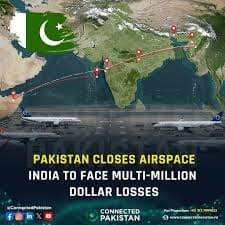
So, here’s the scoop—Pakistan’s decided to close off its airspace to flights coming from or heading toward India. Again. And while it might seem like just another political jab in the long-standing rivalry, this move comes with a pretty hefty price tag.
We’re not just discussing inconvenience for travelers or a few extra miles in the sky. This could cost Pakistan millions of dollars—seriously.
Why This Is a Big Deal
Whenever a country shuts its airspace, airlines have no choice but to take the long way around. That means longer flights, more fuel, higher costs, and grumpier passengers. But here’s where it hits Pakistan hard: overflight fees.
Yep, every international airline that passes through a country’s skies pays for the privilege. Those charges might not seem like much on a single trip, but when you’ve got hundreds—if not thousands—of planes flying over you every week? That money adds up. Big time.
Back in 2019, during the Pulwama-Balakot tensions, Pakistan closed its skies for months and reportedly lost over $50 million in revenue. Looks like we might be headed for a repeat performance.
Who’s Feeling the Squeeze?
Airlines, for sure. Especially the ones flying from Europe to Southeast Asia, which now need to detour and burn extra fuel. Travelers might see slightly longer flight times or higher ticket prices, depending on how long this closure drags on.
But make no mistake—Pakistan stands to lose the most here. At a time when its economy is already struggling, cutting off a solid revenue stream isn’t exactly ideal.
What Happens Next?
Well, diplomatically, it’s just another log on the fire. India and Pakistan aren’t exactly sending each other Diwali or Eid cards right now. Economically, though, it’s a risky move for Islamabad. With fuel costs high and the aviation industry still bouncing back post-COVID, giving up millions in airspace revenue might end up doing more harm than good.





